In the technology project »Model-based development of the evaporator periphery«, the components adjacent to the evaporator are adapted so that newly developed evaporators can be profitably used in a heat pump. In order to operate the evaporator of a heat pump efficiently, certain boundary conditions must be met so that icing and defrosting as well as the equal distribution of air and refrigerant function correctly. These include that the air flow is optimally designed, that the refrigerant enters the evaporator in the correct state and that the ice slurry, which is formed in the drip tray during a defrost, can melt efficiently.
more infoProjects and References
-
-

Lärmemissionen von Wärmepumpen.
In the »MENESA« project, the three research institutes Fraunhofer ISE, Fraunhofer IBP and Fraunhofer IWU are working on methods to improve heat pumps with regard to vibrations and noise. The resulting methods allow structural-dynamic and acoustic aspects to be taken into account at an early stage in the development of heat pumps, so that low-noise operation can be achieved in a real operating environment.
more info -
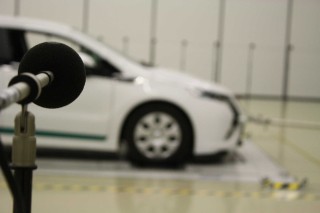
Measurement of vehicle exterior noise on the vehicle test bench.
The acousticians at the Fraunhofer IBP investigate in the context of the project "Fraunhofer System Research for Electro-Mobility" the various aspects of future car concepts, and drive systems, as well as the storage and distribution of energy.
more info -
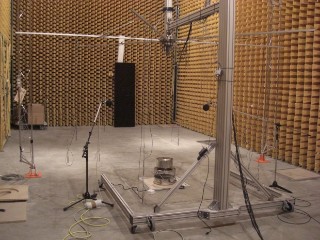
Sound screen in the semi-anechoic chamber.
The aim of the project acoustic umbrella was to design a construction that allows a simple and repeatable investigation of research objects with regard to their radiated sound power.
more info -
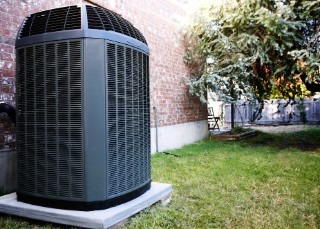
WAMS: Heat pumps - Acoustics and multi-source systems.
Electrically driven heat pumps and air conditioning systems are future-oriented technologies of the energy transition. For widespread use in multi-family houses or office buildings, a new generation of devices is required.
more info -
SAGA
Highlights from research and development
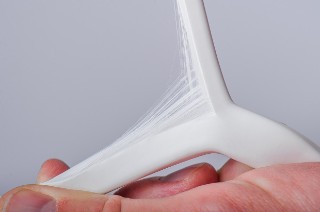
Sound absorbers for aggressive flue gas media.
Researchers at the Fraunhofer IBP have replaced the condensate-sensitive materials with unavoidable waste from PTFE production. In this approach, the scientists achieve sustainability in three respects.
more info -
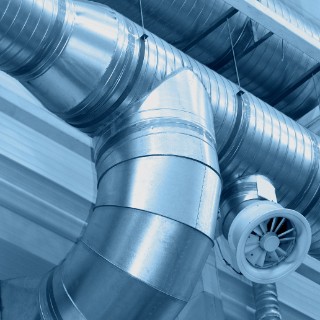
The project aims at reducing acoustic emissions from fans.
In the project “Acoustically optimized design of fan attachments and casings (ADVentAGe)”, hybrid active noise control systems are being developed and validated in collaboration with project partners. These can be integrated into fan casings or typical fan attachments such as inlet cones, protective grilles and diffusers to significantly reduce acoustic emissions from fans.
more info -
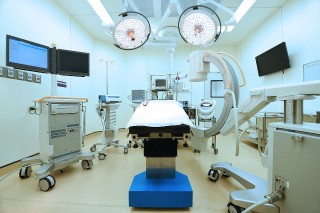
The project aims at developing a demonstrator that can be used in operating rooms
Propofol, an intravenously administered hypnotic, has outstanding advantages over commonly used inhalational anesthetics. It is effective against post-operative nausea, does not trigger malignant hyperthermia - a potentially fatal anesthesia complication - and is not a greenhouse gas. The main disadvantage of propofol, however, is that, unlike inhalational anesthetics, its drug concentration cannot be determined during anesthesia using any clinically applicable method. Photoacoustic spectroscopy is a highly promising approach for monitoring propofol in exhaled air in a clinically applicable way.
more info -

How can precipitation runoff from non-metal roofs be used in water-sensitive cities?
In growing cities, more and more surfaces are being sealed. This increases the contact of rainwater with materials, e.g. roofs, resulting in the contamination of precipitation runoff with harmful substances. However, no clear or statistically relevant information on pollutant emissions is available for most roof materials, as hardly any studies have been carried out and these are usually based on one-off random samples. General conditions such as atmospheric influences or gutter material, are often not sufficiently described. There is therefore a considerable need for research in order to draw scientifically sound conclusions about pollutants in precipitation runoff from non-metal roofs.
more info -
C3RRO - Technology spin-off for the next generation of hygrothermal simulation
Highlights from research and development
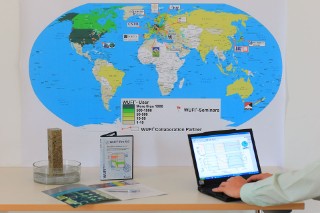
Development of hygrothermal models and user software.
The department of Hygrothermics has developed products to answer issues relating to the heat and moisture balance of components and buildings.
more info